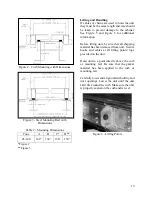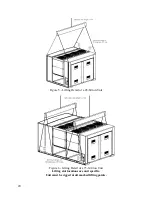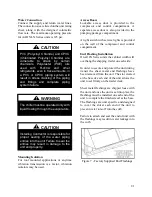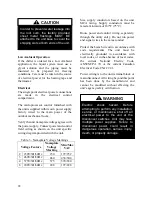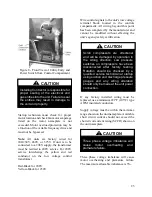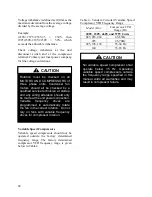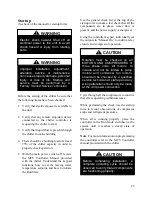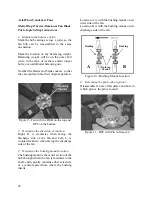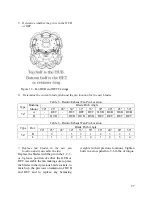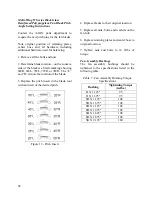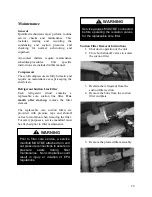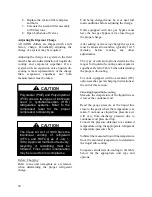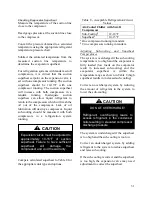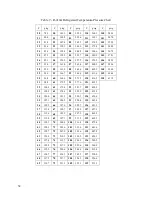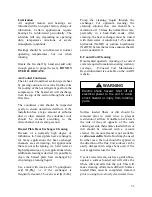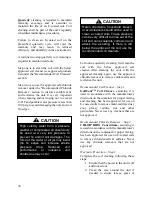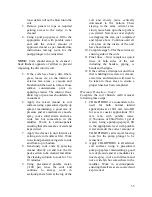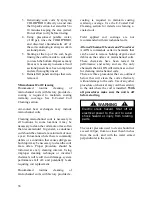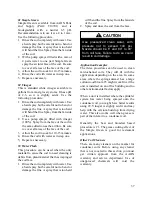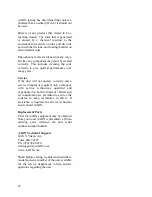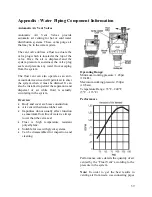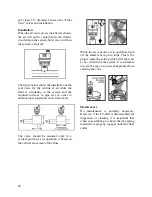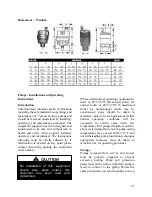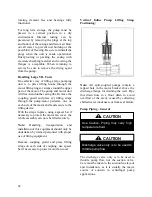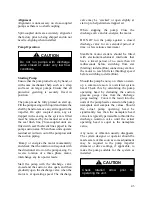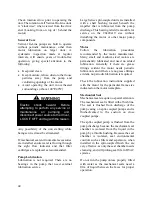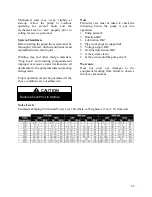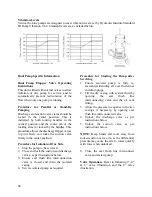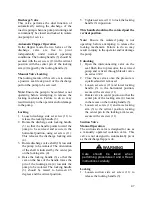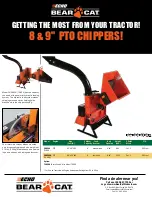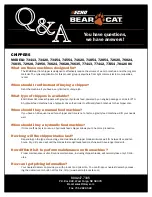
33
Lubrication
All original motors and bearings are
furnished with an original factory charge of
lubrication. Certain applications require
bearings be re-lubricated periodically. The
schedule will vary depending on operating
duty, temperature variations, or severe
atmospheric conditions.
Bearings should be re-lubricated at normal
operating temperatures, but not when
running.
Rotate the fan shaft by hand and add only
enough grease to purge the seals.
DO NOT
OVERLUBRICATE.
Air-Cooled Condenser
The air-cooled condenser section rejects heat
by passing outdoor air over the fin tube coils
for cooling of the hot refrigerant gas from the
compressors. The heated air will discharge
from the top of the section through the axial
flow fans.
The condenser coils should be inspected
yearly to ensure unrestricted airflow. If the
installation has a large amount of airborne
dust or other material, the condenser coils
should be cleaned according to the
microchannel coil cleaning section.
Brazed Plate Heat Exchanger Cleaning
Because of a normally high degree of
turbulence in brazed plate heat exchangers,
for many applications the heat exchanger
channels are self-cleaning. For applications
that are not self-cleaning (i.e. hard water at
high temperatures, etc.) or applications where
additional cleaning is desired, it is possible to
clean the brazed plate heat exchanger by
circulating a cleaning liquid.
Use a tank with weak acid, 5% phosphoric
acid (H
3
PO
4
) or, if the exchanger is
frequently cleaned, 5% oxalic acid (H
2
C
2
O
4
).
Pump the cleaning liquid through the
exchanger. For optimum cleaning, the
cleaning solution flow rate should be a
minimum of 1.5 times the normal flow rate,
preferably in a back-flush mode. After
cleaning, the heat exchanger must be rinsed
with clean water. A solution of 1-2% sodium
hydroxide (NaOH) or sodium bicarbonate
(NaHCO) before the last rinse ensures that all
acid is neutralized.
E-Coated Coil Cleaning
Documented quarterly cleaning of e-coated
coils is required to maintain coating warranty
coverage. E-Coated Coil Maintenance
Record document is available on the AAON
website.
Surface loaded fibers or dirt should be
removed prior to water rinse to prevent
restriction of airflow. If unable to back wash
the side of the coil opposite of the coils
entering air side, then surface loaded fibers or
dirt should be removed with a vacuum
cleaner. If a vacuum cleaner is not available,
a
soft non-metallic
bristle brush may be used.
In either case, the tool should be applied in
the direction of the fins. Coil surfaces can be
easily damaged (fin edges bent over) if the
tool is applied across the fins.
Use of a water stream, such as a garden hose,
against a surface loaded coil will drive the
fibers, dirt and salts into the coil. This will
make cleaning efforts more difficult. Surface
loaded fibers must be completely removed
prior to using low velocity clean water rinse.
Electric shock hazard. Shut off all
electrical power to the unit to avoid
shock hazard or injury from rotating
parts.
WARNING
Summary of Contents for LN Series
Page 49: ...49 ...
Page 50: ...50 ...
Page 57: ...57 Pressure Temperature Limits Flo Trex Cross Section ...
Page 62: ......

